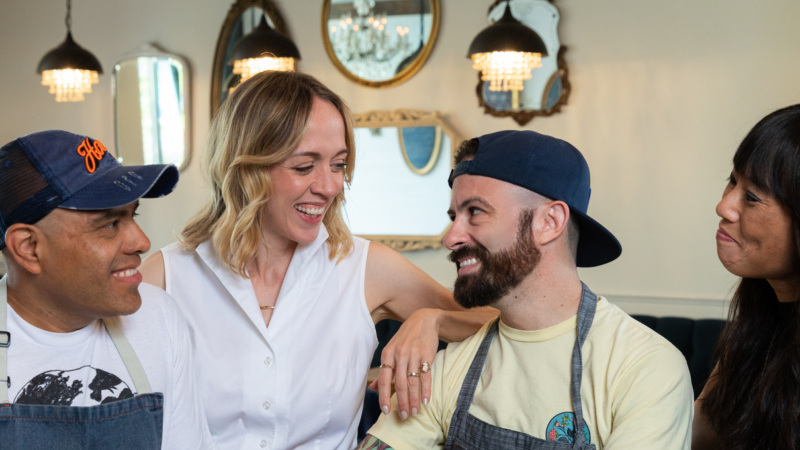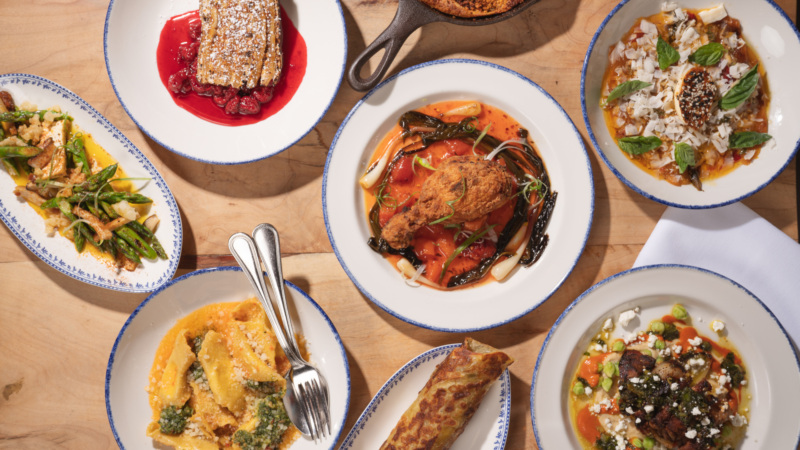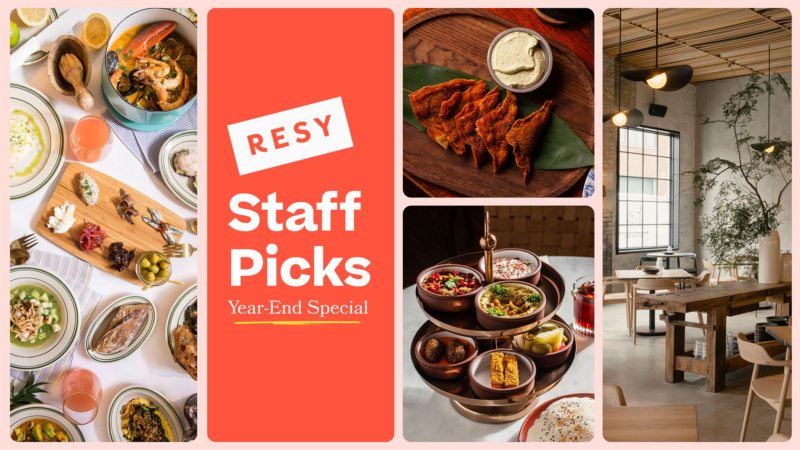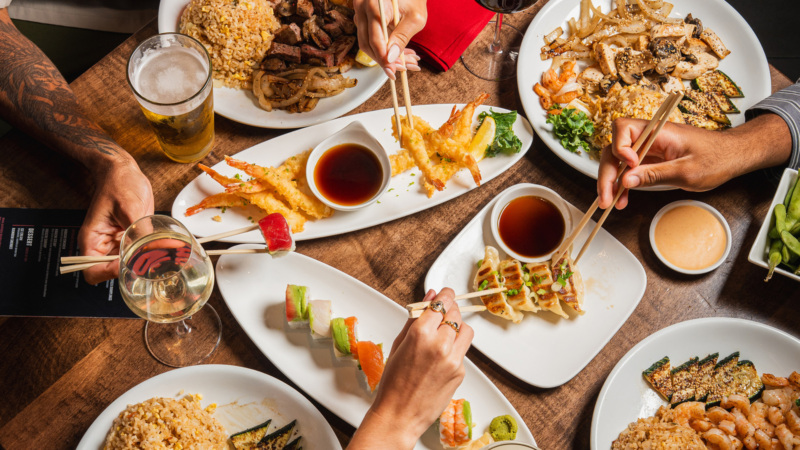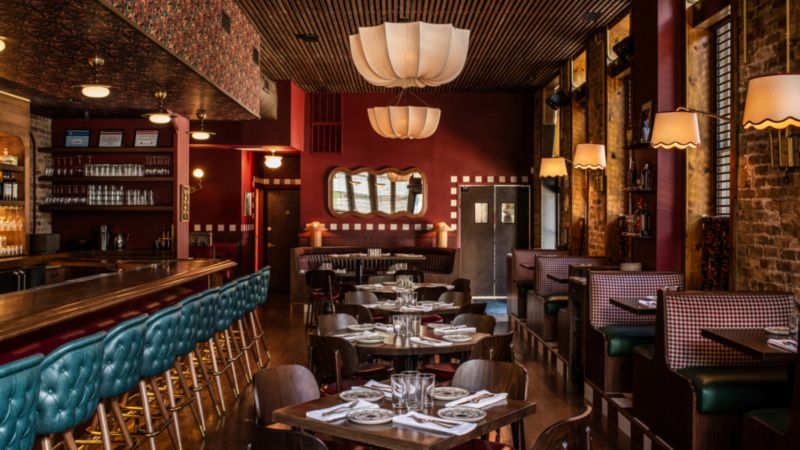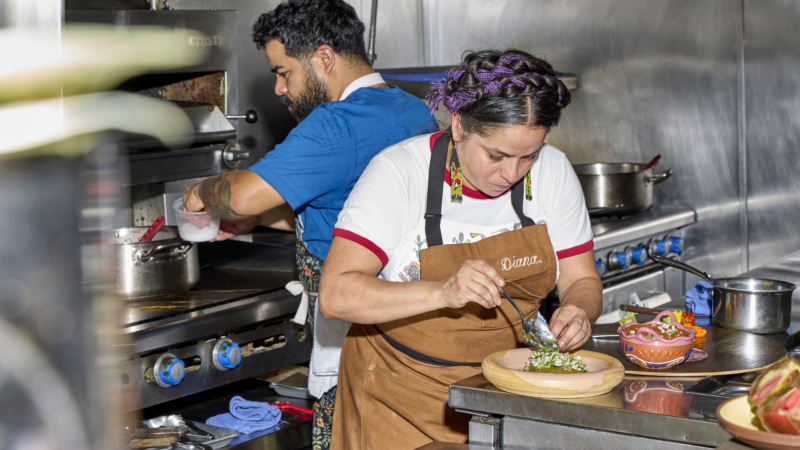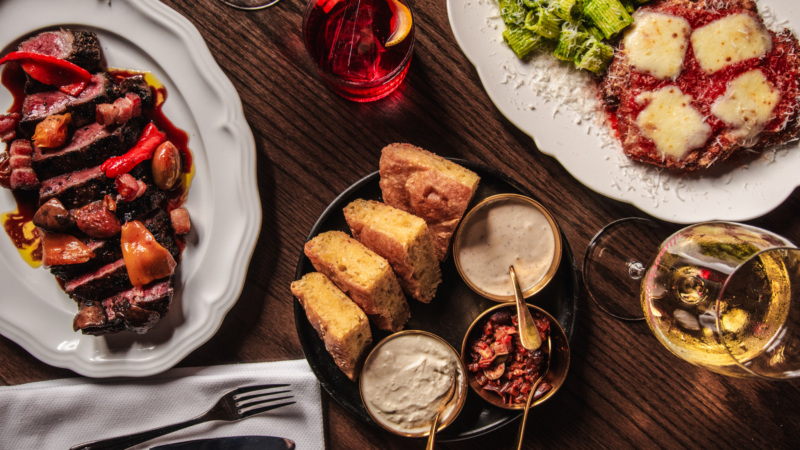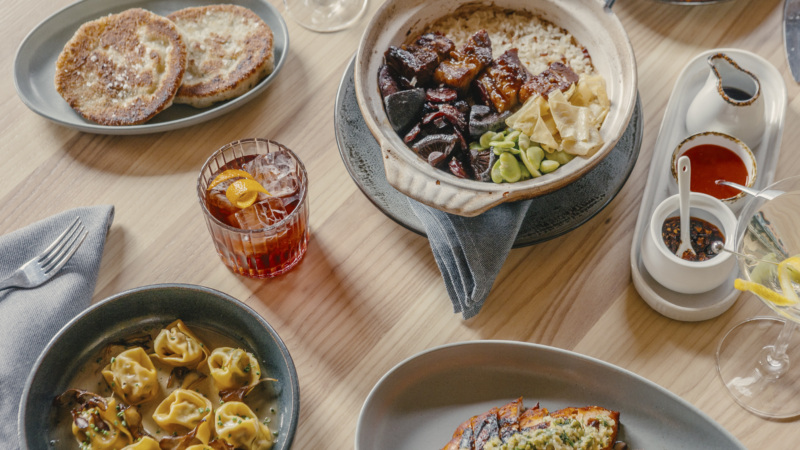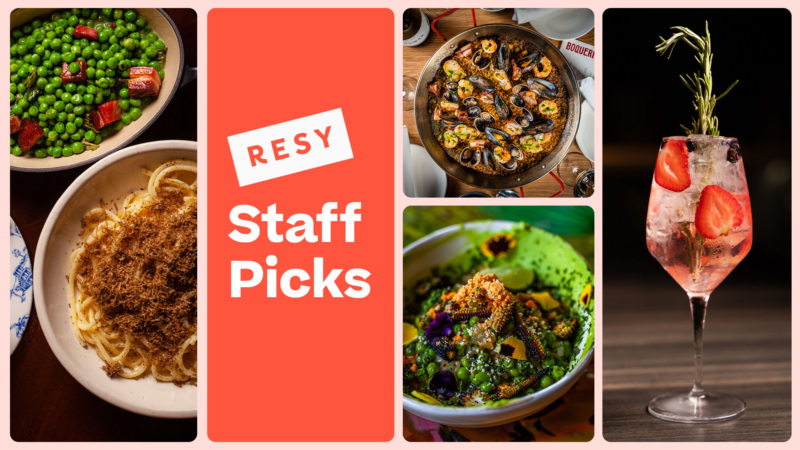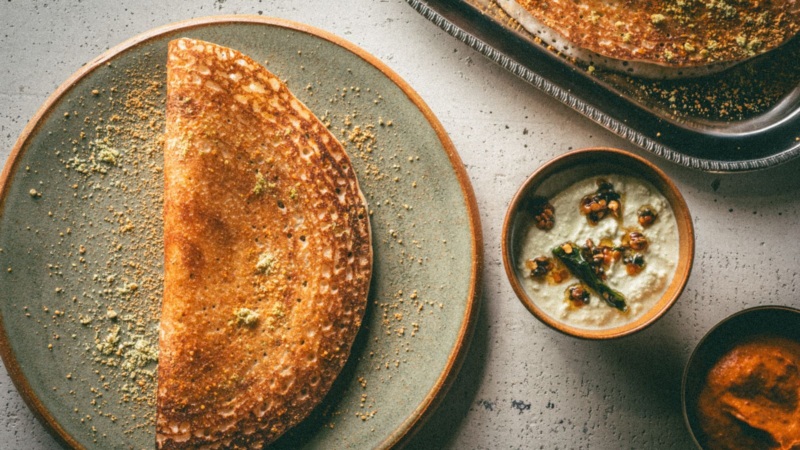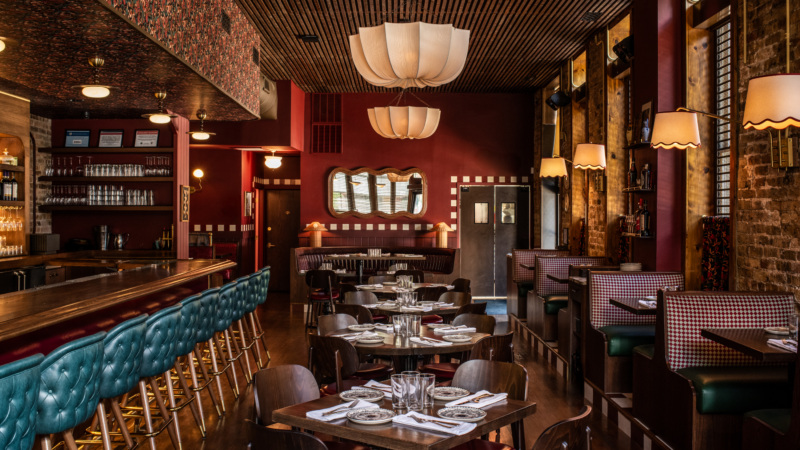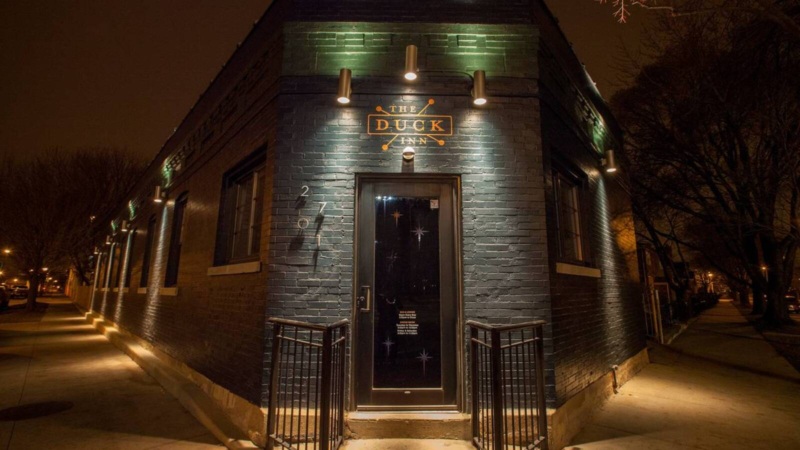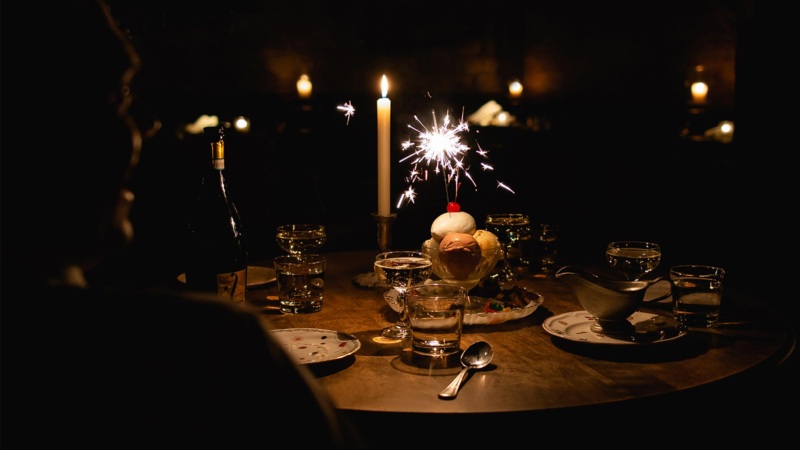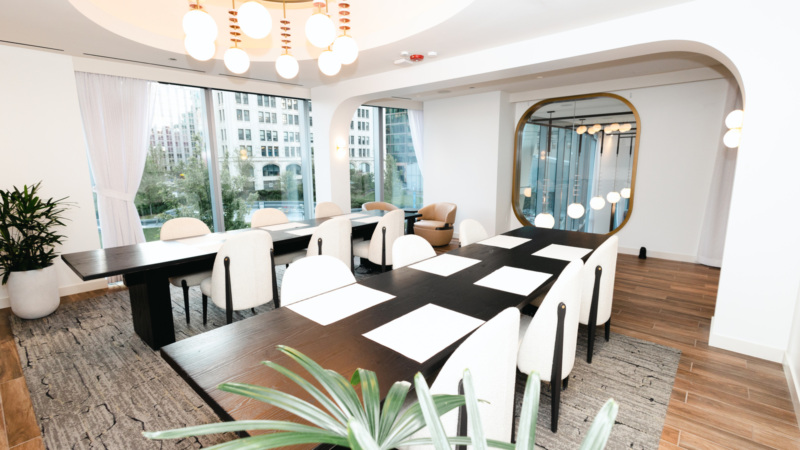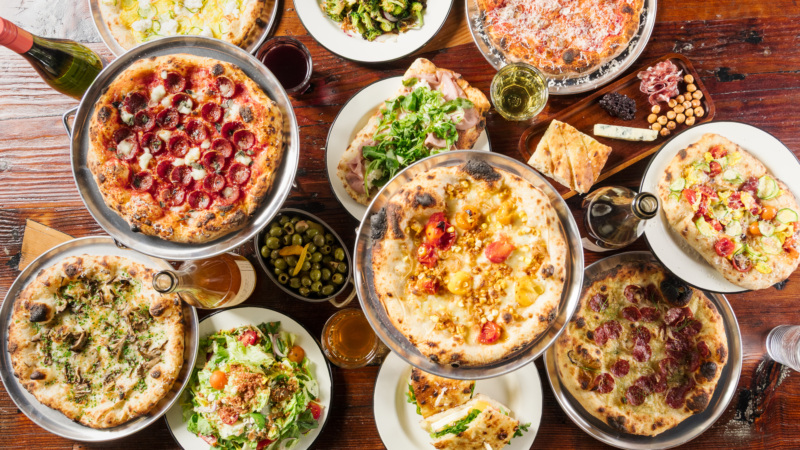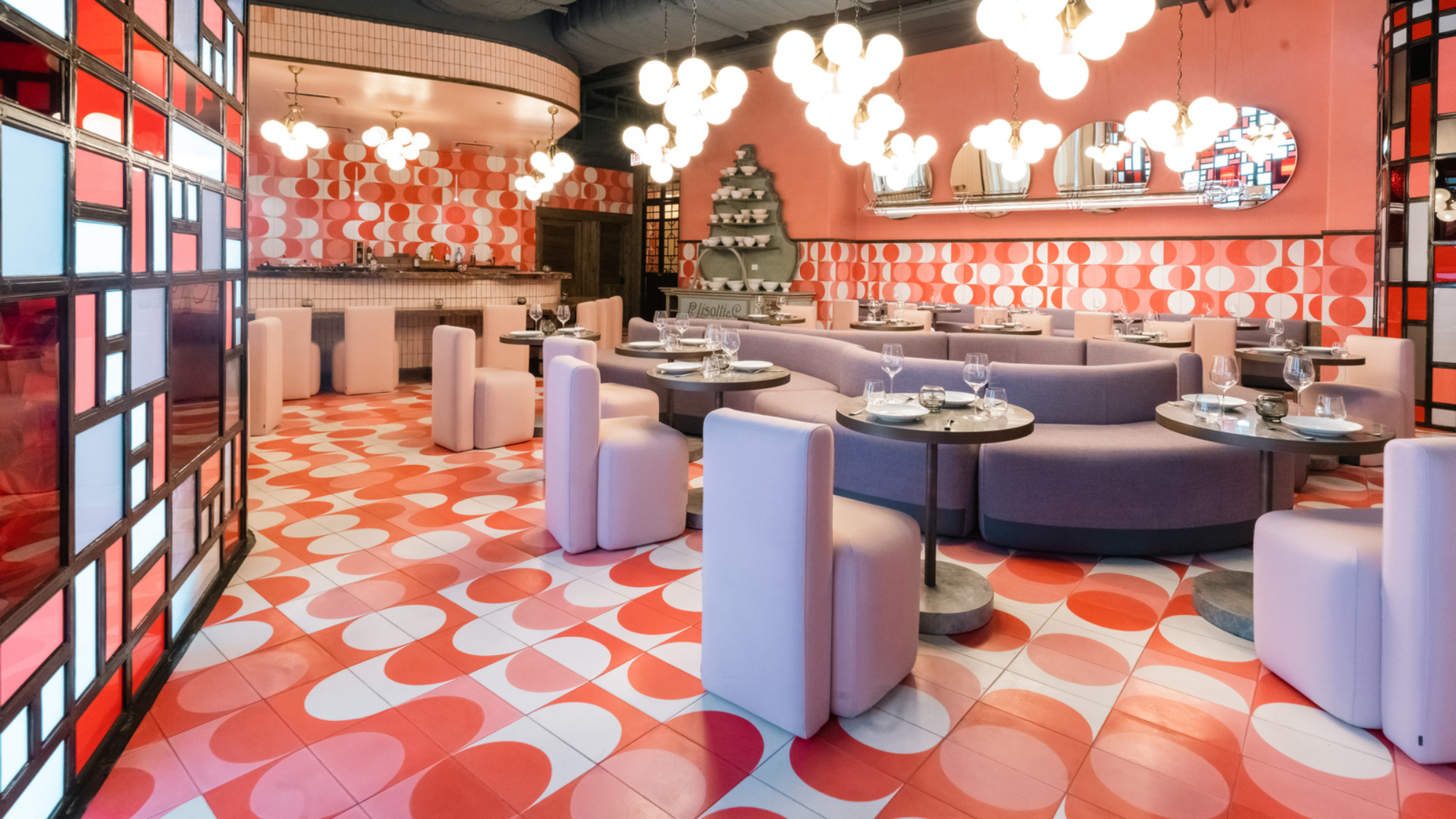
How Chicago’s Bonhomme Mastered the Art of Restaurant Design
Published:
Whether conjuring a bon vivant’s fantastical trip down the old Silk Road, reimagining the modern French bistro in flirty, postmodern fashion, or evoking a sun-drenched aperitif hour in Marrakech, Chicago’s Bonhomme Group has prioritized elegantly immersive design since its 2012 beginnings.
“The idea of creating a world better than the one I lived in has always been part of myself, how I am, and how I think,” says Bonhomme founder and creative director Dani Alonso. “This industry has given me and my collaborators the chance to focus on things we really love, which ultimately are culture, style, and travel. For guests coming in and giving us their time and income, the least we can do is create an escape — a place to indulge their own aspirations to seek culture, travel, and style through wonderful interiors, stories, dishes, drinks and, most importantly, warm hospitality.”
Indeed, it’s from Alonso’s singular mind that such maximalist designs as the plant-filled Casablancan dream Beatnik, and posh Iberian coastal romp Porto, spring to life. (Mind you, he’s never once done a rendering of a Bonhomme spot.)
Here, Alonso takes us through five of the group’s most immersive restaurants, and describes how the design, food, drink, and service fuse together to transport us to glamorous imagined locales.
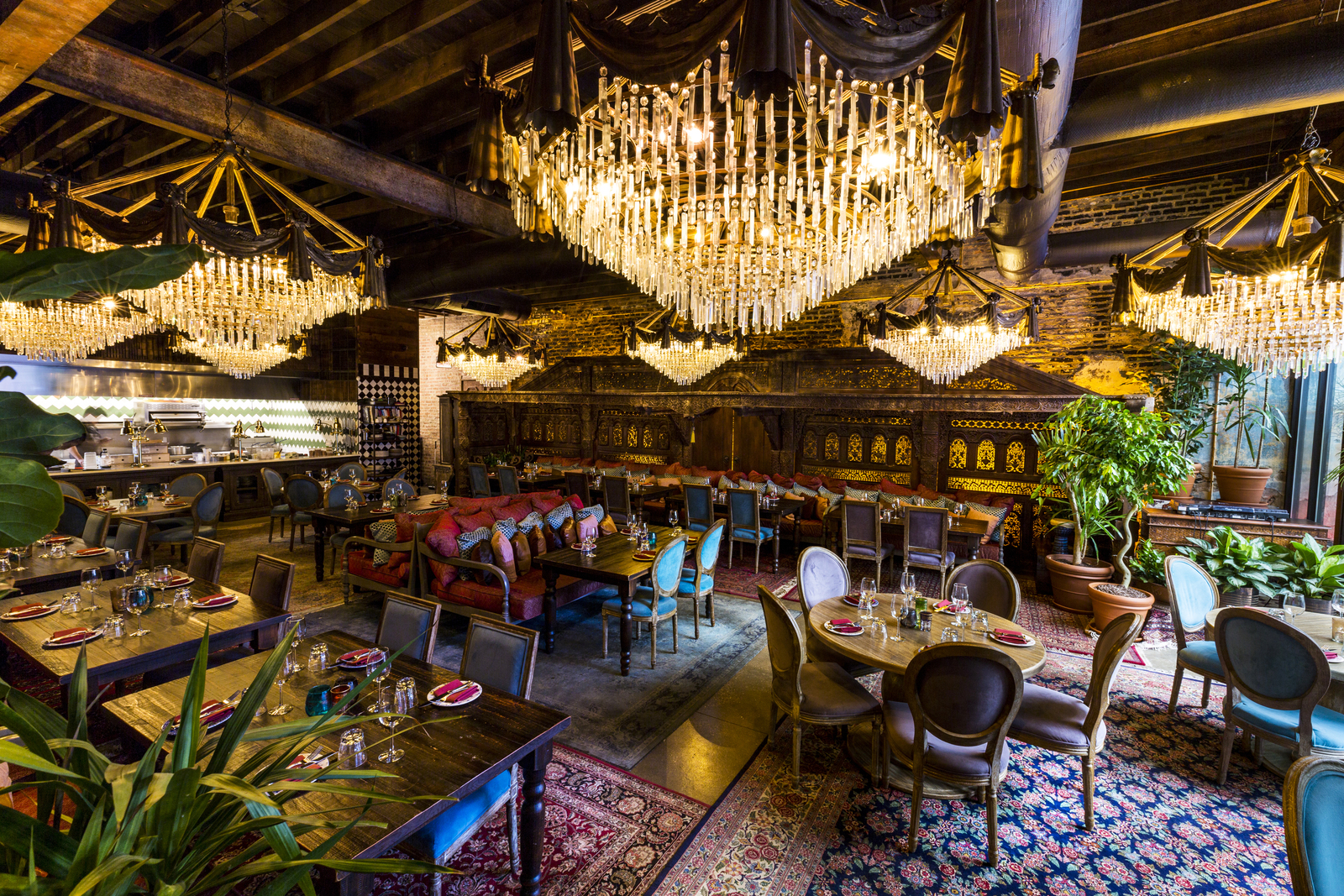
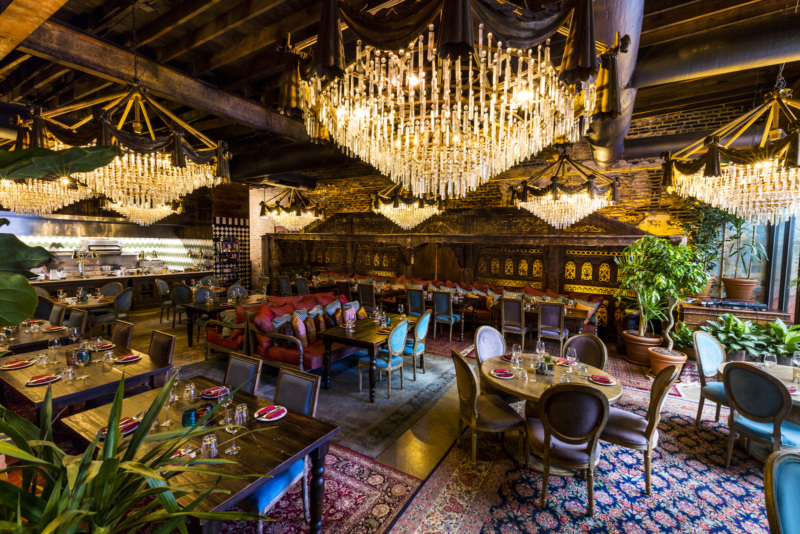
Beatnik
Every Bonhomme concept shares a kindred soul in the Beat Generation — the freethinking artists, writers, filmmakers, designers, and creatives of the ‘50s and ‘60s who sought to break from tradition and class systems. So it’s fitting that this namesake restaurant — which has since sprouted a second location and a boutique hotel in Galicia, Spain (Casa Beatnik) — also arguably launched Alonso’s broader MO. “It’s no secret that I’m a big fan of the Beatnik movement,” he says. “Beatniks and its associated aesthetic are probably closest to my personal style.”
The dramatic, three-part restaurant evokes a midcentury jet-setter’s dream, blending the three cultures closest to Alonso’s creative heart: “Morocco for its incredible combinations of color and passionate artisans, France for its artistic confidence, and Italy for a healthy dose of polish and panache,” he says. Mixing elaborate antiques (midcentury chandeliers and a carved facade from a mansion in Bali) with warmer details (faded Persian rugs, reclaimed wood tables, and deep-set couches smothered in pillows) lends a comfy vibe to this opulent room.
Dishes from executive chef Marcos Campos likewise flit nomadically across Israel, Lebanon, Morocco, Peru, and Mexico — sometimes all on the same plate. Passing around platters of Lebanese roast lamb with pistachio tzatziki, patatas bravas with labneh and caviar, and smoked nopal noodles with chicharron is a convention-defying exercise, and nothing short of freeing.
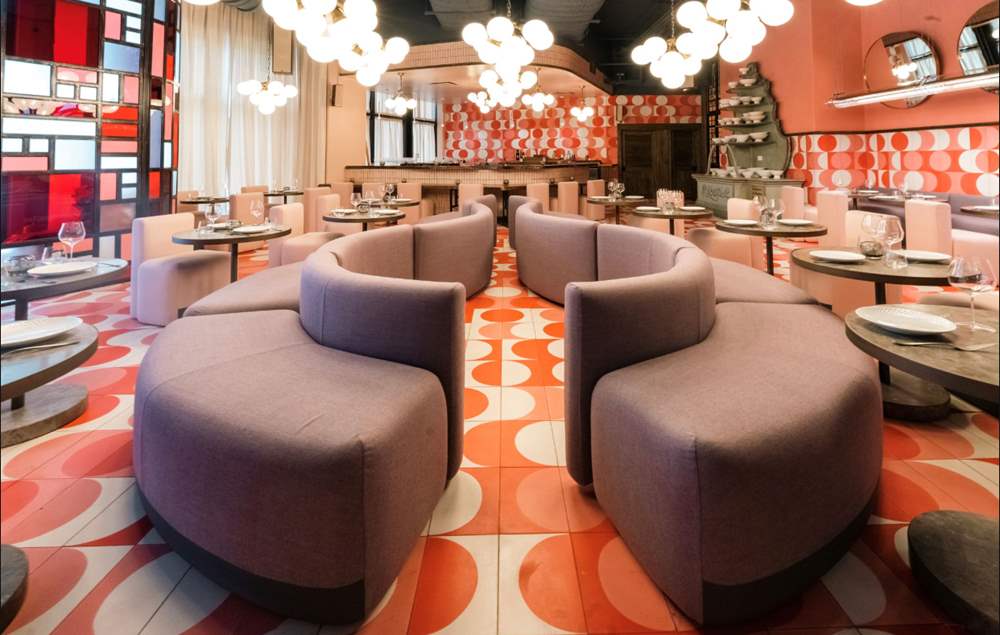
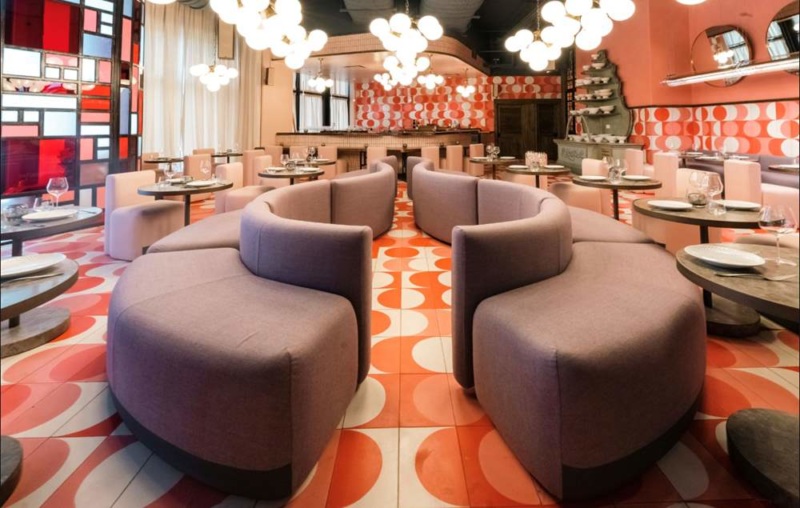
Coquette
Frothy, French New Wave aesthetic meets French-leaning cocktails, natural wines, and playful, wood-fired bistro cooking at this pink, Champagne-doused newcomer in the West Loop. Owing in part to three years of working with France-born chef Erwin Mallet (the chef de cuisine of Michelin-starred Porto), Alonso felt the pull to “write our own chapter in the book of Chicago’s relationship with French cuisine.”
He started by asking Mallet and Primiano: “If you were to open a modern French bistro, what would it look like?” Alonso had ideas of his own, of course — though they had more to do with what it might look like if Yves Saint Laurent opened a bistro.
YSL, French New Wave filmmaker Jean-Luc Godard, and the Bauhaus abstract design movement inspired the bold pinks and reds, geometric patterns, and Mondrian-esque steel-and-glass wall panels that visually dominate the space, which is softened by curvaceous, Spanish-designed furniture in gentler lavenders and pinks. Though boldly postmodern beneath golden bauble chandeliers, it’s a little wink-wink, too, as if to say, “Don’t take me too seriously, okay?”
Menu-wise, Mallet built on the open-fire cooking he’s mastered at Porto to reimagine the usual bistro suspects. In the staple Sole Meuniere, whole dover sole is grilled on a Josper Basque grill and served with smoked brown butter. Nor are Oeufs et Oursins quite expected — here comprising scrambled duck eggs, sea urchin, and smoked potato foam finished with dried caviar.
“It’s representative of the freedom of the French New Wave movement, that very French artistic confidence,” Alonso says. “Of all the projects I’ve done, Coquette might have been the most terrifying. But we kept with this idea of, be fearless and tenacious; it will all come together.”
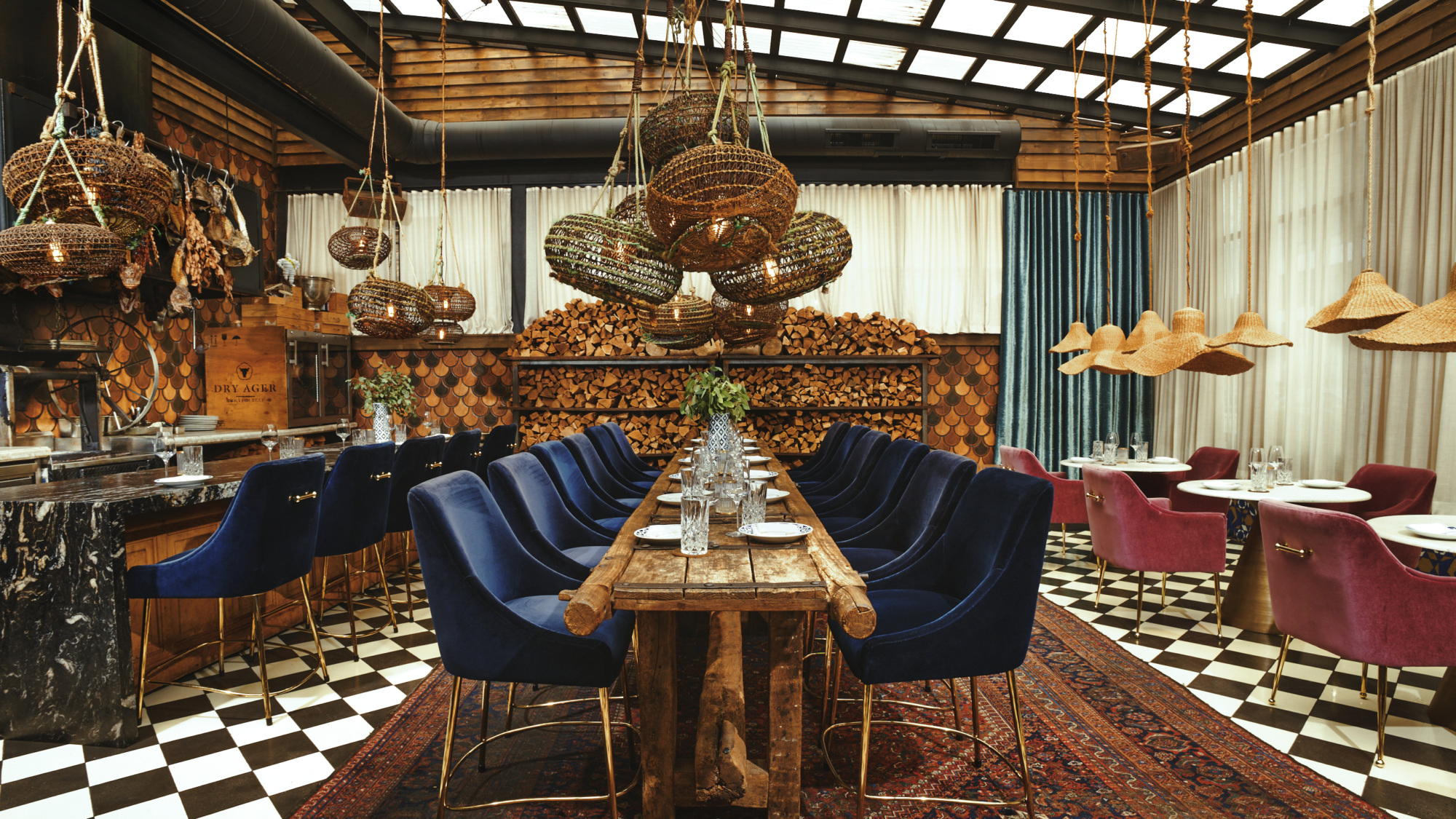
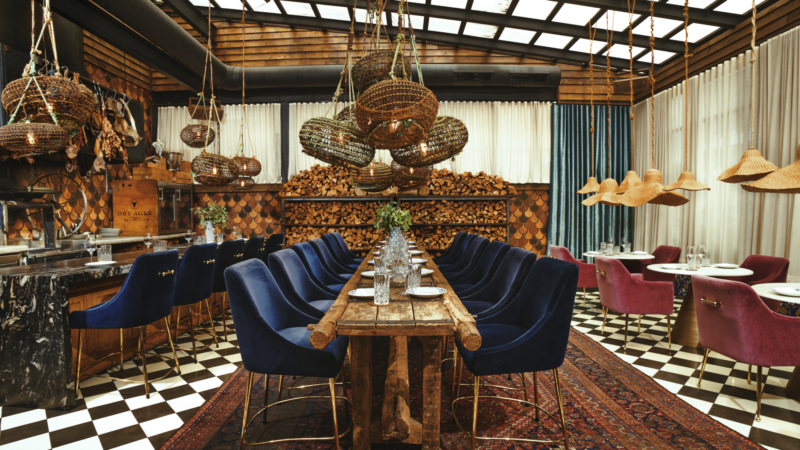
Porto
No one would’ve questioned Alonso if he’d gone with a tasteful nautical theme at Michelin-starred Porto: this is a place that’s all about “fish, fish, fish — flown in weekly from Portugal and Spain,” as Alonso puts it. This West Town spot pays homage to the food and wine of still-wild northern Portugal and Alonso’s native Galicia, where you might not hear much besides the native languages and the frothing sea.
“As I started to pull back layers, I discovered a real richness to the visual arts history of Portugal,” Alonso says. “What immediately hits the eye are all the facades elegantly, colorfully appointed with ceramic tile, so I started to draw inspiration from that.”
Walking in, your gaze instantly trains on four evocative prints covering Porto’s walls, designed in collaboration with local artist Erik DeBat. In another gentle nod to Spain and its literal bedrock, granite elements, like custom-brushed dining tables, accent the opulent room. Alonso does indeed address the sea — here through vintage French sardine nets turned into chandeliers and wood mosaics from repurposed fishing boats; “nautical, but not overt,” he says.
The restaurant dually taps the creative prowess of Spain-born executive chef Marcos Campos and France native Erwin Mallet, who rely heavily on elemental cooking over fire and ancient preservation and seasoning methods — playfully contrasting Porto’s maximalist environs. Think cold-smoked oysters with seaweed escabeche, vaca vieja tartare with garum and oyster emulsion, and charcoal-grilled citrus-cured cod “bacalao,” with smoked corn and fermented yuzu kosho. Porto also boasts one of the largest rotating selections of Iberian conservas, which are often presented unmanipulated to celebrate their quality. Like the ocean, Porto’s stellar, small-production wine list — focusing on the Iberian Peninsula, Atlantic islands, and Mediterranean — is bold and refreshingly unpredictable.
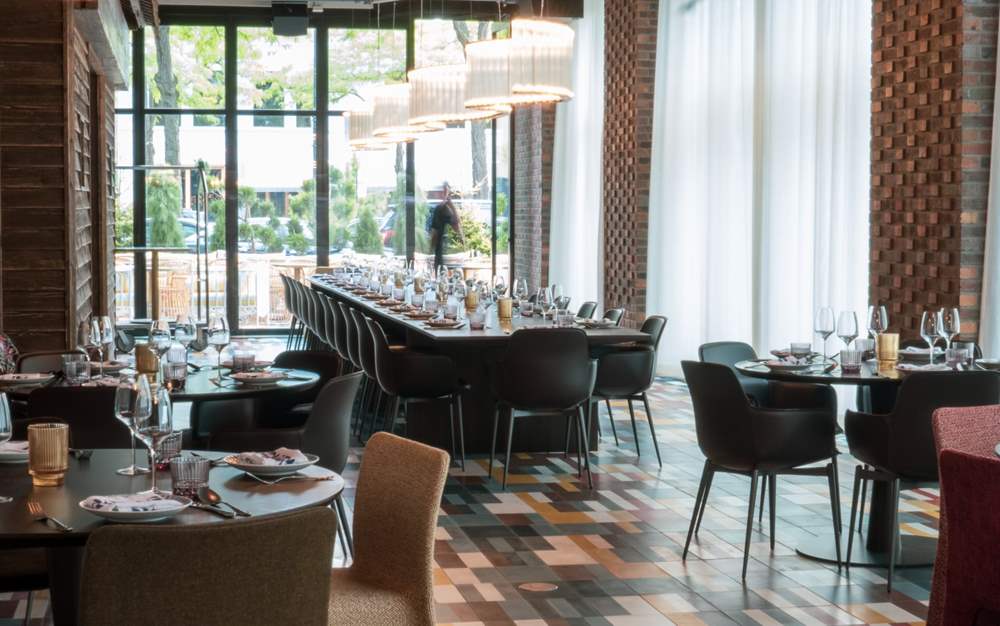
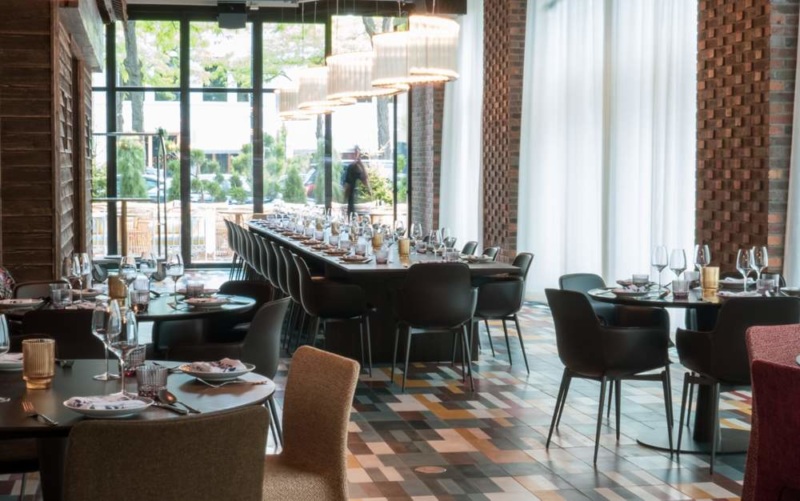
Bambola
Whereas Beatnik is driven by a more exotic locale-driven mindset, Bambola in the West Loop is more about the journey, and finding the thread that connects it all across a long trip. In this case, that trip comprises a culinary tour of the old Silk Road connecting Europe and Asia, led by a connoisseur with a penchant for amassing art, textiles, and objects. Said guide, Bambola (Italian for “doll”), is also the fictional muse who establishes order in this elaborate world with its dizzying array of influences.
“People think maximalist design means just throwing a lot of ideas at the wall,” says Alonso. “You can do richness in color, texture, and layering, but it requires a certain ability to compose those spaces without it becoming overwhelming. You need to find what will be the one, two, or three repeating elements that gives the viewer someplace to rest their eyes. That place for Bambola was the storyteller herself.”
With help from Chicago showroom The Golden Triangle, Alonso spent about two years amassing antiques and rare furnishings from China, Thailand, Burma, Pakistan, and India to decorate Bambola (the restaurant, and the fictional woman’s luxe home). He leaned on East-West gateway city Istanbul’s highly decorative aesthetic for inspiration as he intertwined these elaborate found objects with handmade cement tiles from Popham Design, hand-blown glass chandeliers from Milan and Venice, and geometric Moroccan Beni rugs into a luxe mosaic.
Alonso likewise empowered chef de cuisine Alisha Elenz, executive chef Marcos Campos, and pastry chef Shannah Primiano to take their own versions of the Silk Road journey — drawing on their heritage and travels. The joyous results include Turkish lamb dumplings with Parmesan XO sauce and mint za’atar, lobster spaghetti with smoked tomato curry and black lime breadcrumbs, and a trade route-inspired dessert menu of Indian rice and goat milk pudding and golden phyllo with Lapsang Souchong syrup and mulberry-eggplant jam.
“As long as Chicago allows us to remain open, we have a long time to slowly, confidently explore these flavors and tease out our own takes on them,” Alonso says.
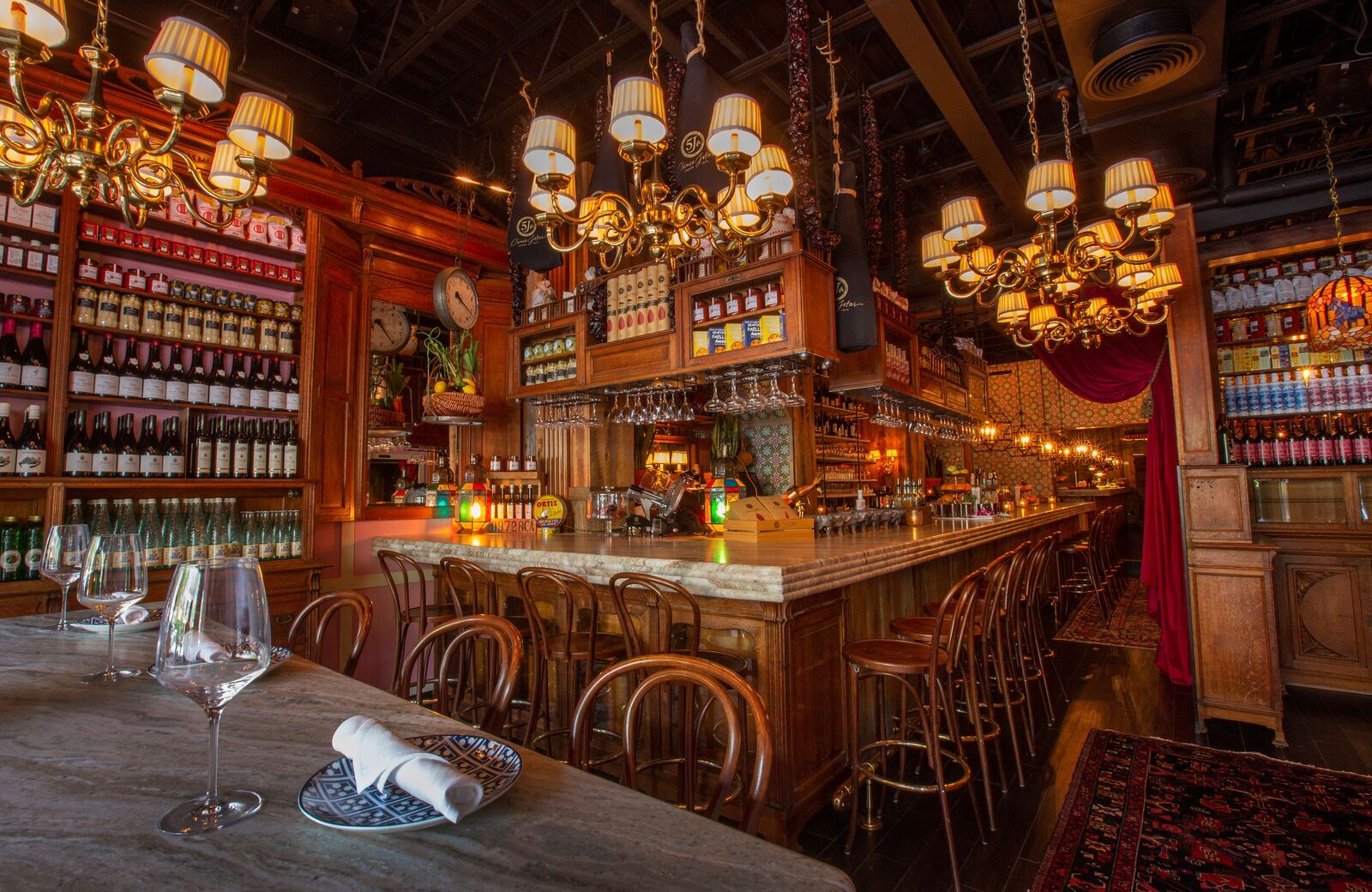
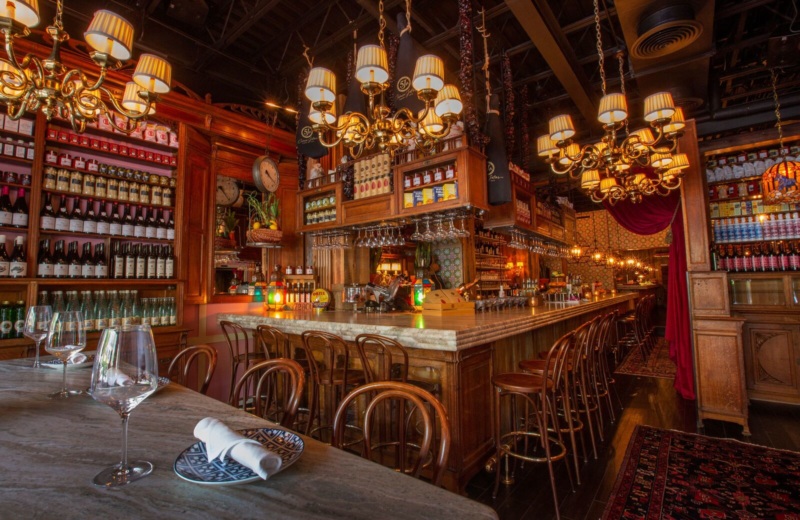
Mama Delia
Armchair escapism took on new significance in 2021, as restaurants edged back open and diners had a serious case of wanderlust. Interestingly, for Alonso and company, Mama Delia represented a homecoming of sorts, to the Spain they know and love, with its sherry bars, boldly flavored and hyper-seasonal cooking, and gift for world-class sundries and preserved foods at neighborhood ultramarinos.
The space that formerly housed small-plates Spanish restaurant Black Bull was approaching its 10th anniversary when the first Covid lockdown sent the world reeling. “Coming up on that, I was going to propose we close and reopen with a more evolved concept anyway,” Alonso says. “We were in the heart of the first Covid closure, thinking, what’s next when this thing reopens? Everybody is having a very personal, existential moment. Let’s go back to the beginning. What is my beginning? My mother. My mom is Delia, so Mama Delia.”
Like a warm hug from your (decidedly stylish) mama, this lush space envelops visitors in layers of rich fabrics, warm light, and wood details. The food and drink push the Spanish cooking conversation further — via smoked almond and miso romesco-dressed seasonal vegetables and tuna with black garlic and ginger in Peruvian aji amarillo sauce. But it wouldn’t be Mama’s casa without paella; Valencia-native Campos’ own take leans classic, with saffron-tinged bomba rice, chicken and rabbit, green beans, gigante beans, and socarrat (that glorious crisp-rice crust).
Opening mid-pandemic all but required offering to-go items. For Mama Delia this means a Spanish bodega/deli stocking Campos’ and Alonso’s favorite jarred olives and peppers, oils, potato chips, conservas, and wines. Said sundries are displayed in an antique Belgian pharmacy from Architectural Artifacts — all original bookcases, glass cases, and cabinets that the team “disassembled and lovingly reassembled.”
Indeed, in many ways this nostalgic concept embodies the learnings of the past three years for Alonso and his team: the importance of respect and intention when paying homage to other cultures and historical eras, and the value of time itself.
“Like so many, I feel this heightened urgency, but I want to use my time wisely,” he says. “I like to think we are always very thoughtful and respectful about everything: our relationship to one another, with guests, with the people and places we love and want to represent in our own venues. But there’s a new thoughtfulness now that guides us when we create dishes, cocktails, and spaces. I believe that hospitality will be one of the last analog experiences for people. We should all be more thoughtful of the stories we tell.”
Maggie Hennessy is a Chicago-based restaurant critic and food writer, whose work has appeared in such publications as Eater, Plate, Food52, Wine Enthusiast, and others. Follow her on Instagram and Twitter. Follow Resy, too.













